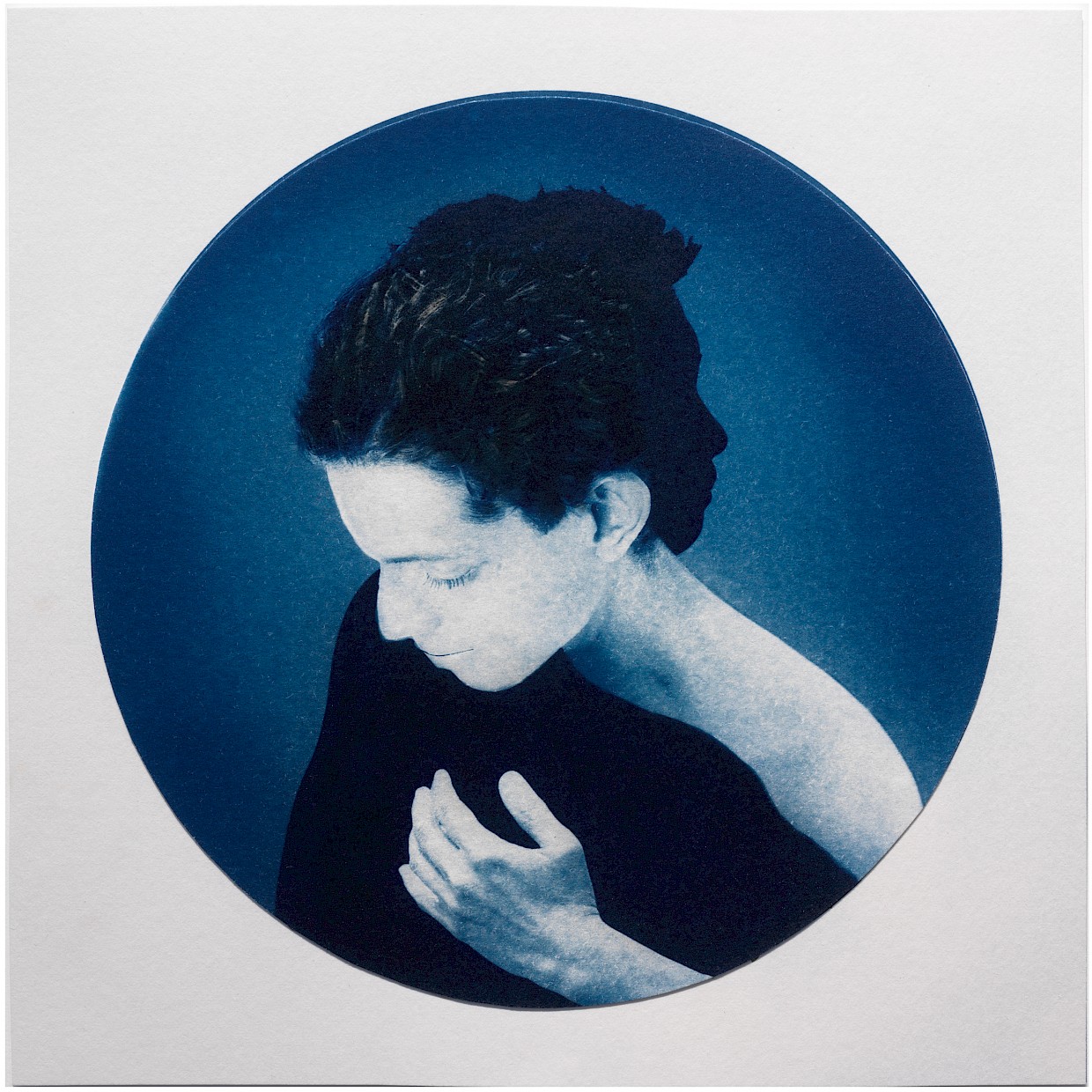How to Be More Spiritual
Aug 21, 2020 / The Twelve Mysteries / Joseph Campbell / james hollis / spirituality / mythology

Buy a Print
or License image
I had an epiphany while writing last week’s article: I want to be more spiritual and explore it in my art and writing. I don’t actually want to do this because talking about spirituality is…icky.
But then I asked myself, “What’s the point of ‘following my bliss’ if I just turn around at the first sign of fear?”
How do you become more spiritual? In this article, I share the approach that I’m learning from the books of psychoanalyst James Hollis and comparative mythologist Joseph Campbell.
How to Start Being Spiritual
All my recent readings, artwork, and writing feel like it’s converging on this topic. It’s useful to trace how I got here.
In Finding Meaning in the Second Half of Life (Part 2), I defined spirituality, religion, and mythology as systems of beliefs about God or a deity. In that article, I quoted James Hollis, who described a method of discovering a personal spirituality:
“To thoughtfully examine our culturally induced religious life is in no way to denigrate the great world religious traditions. Remember, we are to search them all with serious intent to find what pieces speak to us. Those great images still have enormous linking and healing power; however, each of us has to make that discovery on our own.”
In The Power of Myth: Why It’s More Important than Ever, I quoted Joseph Campbell who said:
“Read myths. They teach you that you can turn inward, and you begin to get the message of the symbols. Read other people’s myths, not those of your own religion, because you tend to interpret your own religion in terms of facts–but if you read the other ones, you begin to get the message. Myth helps you to put your mind in touch with this experience of being alive.”
There are many ways to be more spiritual. One way is to go to the many world religious traditions and determine the pieces that resonate. Don’t just read the religion you inherited from your parents or the tribe you were born into. In my opinion, this last point from Campbell is key, and I’m going to illustrate why by way of an example.
Creation Myths – Three Examples
All mythologies have a cosmological function that explains how things came to be. Let’s look at how human beings were created according to the Greek, Hindu, and Christian mythologies. I found these examples from Joseph Campbell’s book, Primitive Mythology (affiliate link).
Greek
In the beginning, a creature walked the Earth who had a face with two heads, a round body with four hands and four feet. This creature came in three variations: male-male, male-female, and female-female. The gods on Mt. Olympus apparently feared these powerful creatures so much that Zeus decided to cut them in half. That is how human beings were created, according to the allegory in Plato’s Symposium.
Hindu
In the beginning, there was no one except the Self who was “as large as a man and woman embracing.” This creature was alone and desired a second. “This Self then divided himself in two parts; and with that, there were a master and mistress…He united with her, and from that mankind arose.”
Christian / Hebrew
Since the Christian Bible (Old Testament) is the same as the Hebrew Bible, Except for some grouping and titling differences in some of the books. I will use the Hebrew Bible(affiliate link) verses here.
“And the Lord God fashioned the human, humus from the soil, and blew into his nostrils the breath of life, and the human became a living creature.” (Chapter 2, verse 7)
God then created all the animals and realized the human was alone, so
“the Lord God cast a deep slumber on the human, and he slept, and He took one of his ribs and closed over the flesh where it had been, and the Lord God built the rib He had taken from the human into a woman…” (Chapter 2, verses 21-22)
How to Read Myths
I summarized these creation stories to only a few sentences to make the following points.
Focus on Similarities
Even in their condensed forms, these stories are strikingly similar. The fuller versions would show even more similarities. The one I want to focus on in this article is the common motif of a figure being split into two. If you look at other mythologies, you will find the same motif (like the yin and yang in Chinese mythology).
There will obviously be story differences due to the influences from the local geography and culture. However, I like the idea of focusing on the similarities for two reasons:
- It creates a sense of awe and mystery, which, if you remember, is the mystical function of mythology. The mystical function is one of the reasons why we need mythology even in the 21st century.
- The similarities speak to our shared humanity–a hopeful idea worth meditating on, especially during this time of the pandemic and social upheavals. As I mentioned in my artist statement for the COVID and anti-racism art project, The Unseen, “We come from the same ground. We live and die under the same blue sky.” I really like the sound of that, and it’s even supported by myth!
Read Myths Symbolically, Not Literally
To grow spiritually, read myths symbolically and not literally. This is what Joseph Campbell meant when he said to read other people’s myths instead of your own. No one in the 21st century would read the Greek and Hindu myths above and say, “This is how it actually happened.” If one recognizes and accepts the similarities between mythologies, it would then be nonsensical to believe that the Christian version is literal truth and “how it actually happened.” To start being spiritual, read the connotation and not the denotation.
What We Can Learn Spiritually from These Myths
You might be thinking at this point, “Okay, but so what? What spiritual insights or connotations can you draw from these fantastical stories?”
Clearly, myths fall apart if we read them literally. However if we read them symbolically, we arrive at some spiritual insights like, in this instance, the nature of marriage. Consider the following:
- In the beginning, there is only one figure that is then split into two.
- If you read the full versions of these stories, it becomes clear that the initial figure symbolically contains the male and female versions of a human being. In the Christian / Hebrew story for example, “Before the separation of Eve, Adam was both male and female.” From Primitive Mythology, p104.
- The translation footnotes of the Hebrew Bible support this statement too. The word “human” as used in Genesis, in Hebrew is ‘adam, which is “a generic term for human beings, not a proper noun. It also does not automatically suggest maleness, especially not without the prefix ben, ‘son of,’ and so the traditional rendering ‘man’ is misleading…”
While I’ve heard and read about these creation stories before, I never thought about them until now. The androgynous Adam totally shocked me when I first read it! This illustrates the benefit of reading other people’s mythologies: it expands one’s interpretation and appreciation of the same story in one’s religion.
So, what is marriage? These myths suggest a model. Marriage can be viewed symbolically as the return to that initial state of wholeness as one being. Joseph Campbell observes:
“Originally you were one. You are now two in the world, but the recognition of the spiritual identity is what marriage is. It’s different from the love affair. It has nothing to do with that. It’s another mythological plane of experience. When people get married because they think it’s a long-time love affair, they’ll be divorced very soon, because all love affairs end in disappointment. But marriage is recognition of a spiritual identity.”
– Joseph Campbell, The Power of Myth, p5
If we view marriage in this way, wouldn’t it be a wondrous and mysterious thing? I think so.
Another spiritual insight that can be drawn from these creation stories is that marriage has nothing to do with sexual orientation or gender for that matter. It is brought up in the Greek story, and it is inherent in sexually undifferentiated Adam in the Genesis story. What gift is this insight for my LGBTQ+ brothers and sisters who are still shunned by organized religion today! If we have the courage to discover our personal spirituality, we can adopt a larger story about what marriage means.
That’s the beauty of reading mythology.

Buy a Print
or License image
Learn More About Spirituality
I hope I demonstrated how mythologies can help you become a spiritual person. We have the basics to start: read other people’s mythologies, compare them with your own, and see what resonates. Read symbolically and not literally. Becoming a spiritual person is a lifelong task. I hope to share what I learn through my art and writing, so click to subscribe.
Good luck on your journey!



